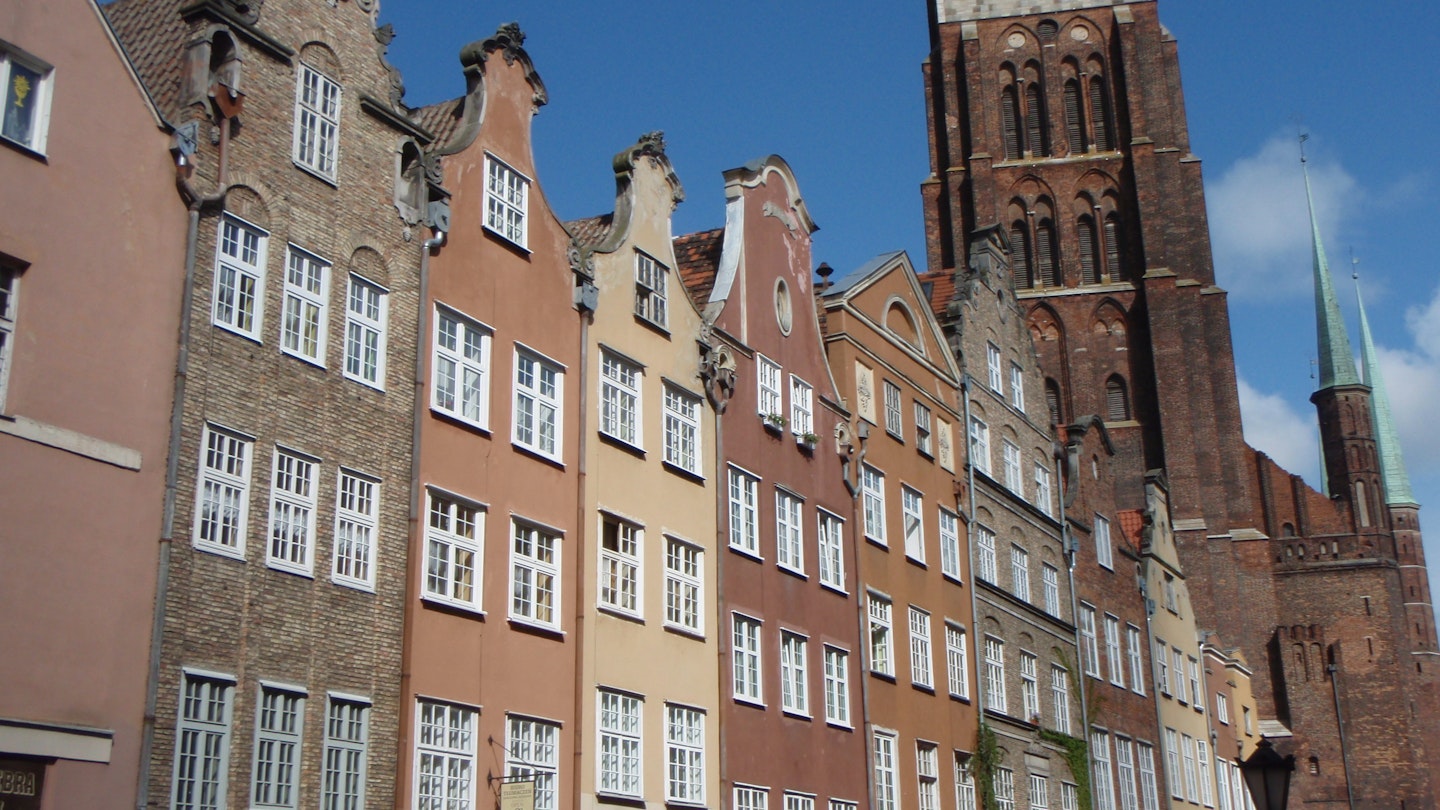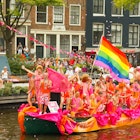Port cities are always interesting. Their architecture is a legacy of trading prosperity, and their cultures are influenced by a cosmopolitan past of merchants and sailors. Poland’s Baltic city Gdańsk has all that and more, with a tumultuous history that’s left its mark and added character. The best way to experience this vibrant place is by walking its historic heart.
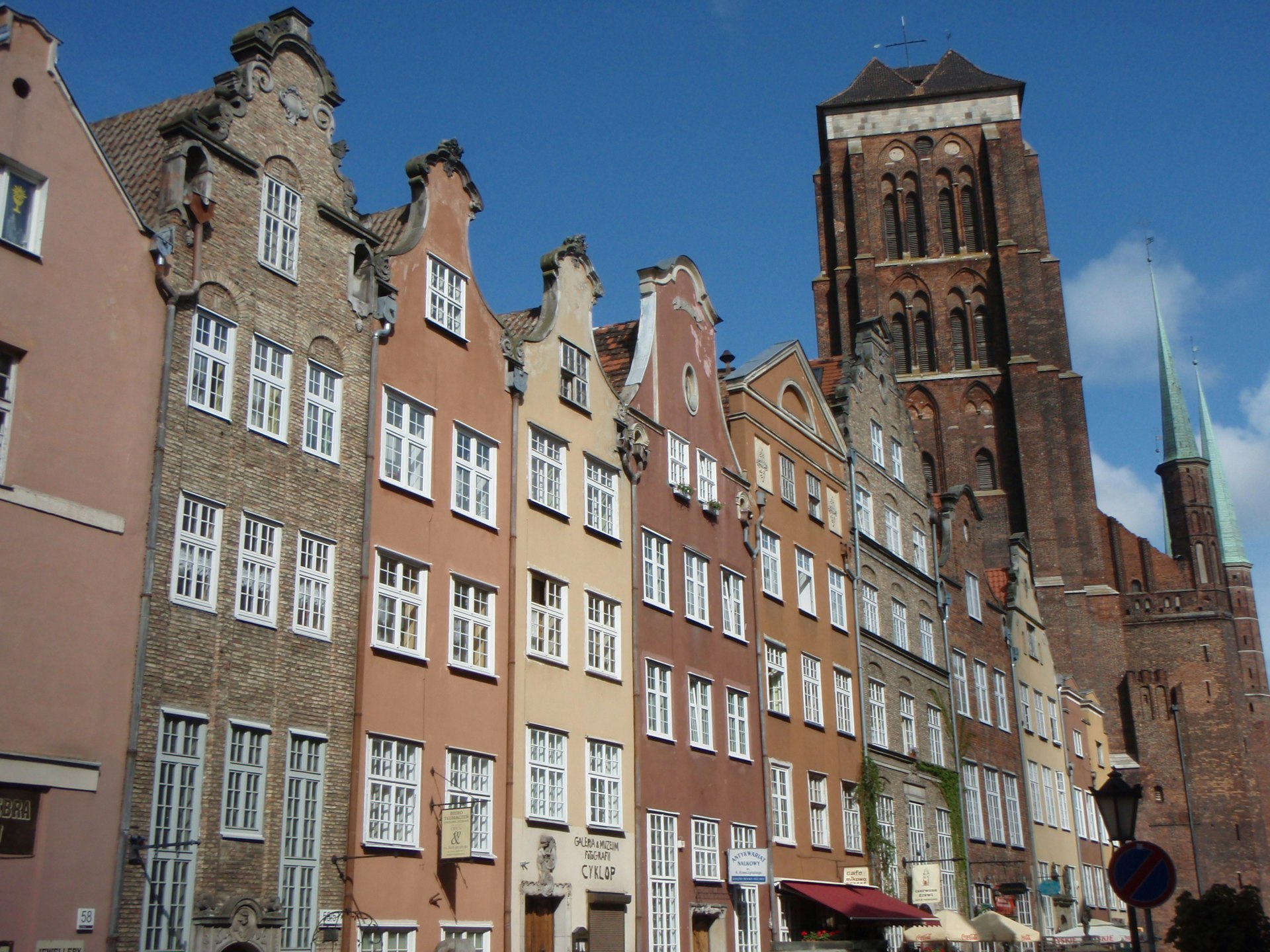
The gates of kings
When the kings of Poland came to the port city of Gdańsk, they would display their splendour by promenading along the Royal Route. You can do the same by starting at the Upland Gate, at the western end of the picturesque Main Town. Built in the 16th century, it’s embellished with unicorns, angels and lions.
Continue your progress to the nearby Foregate. Once a jail, it’s now home to something much more attractive: amber. This valuable fossilised resin, washed up from the Baltic sea and fashioned for use in jewellery, is one of the city’s great treasures and is featured in the Amber Museum within the gate. Visit and take a close-up look at one-of-a-kind ‘Baltic gold’.
The next arch, the 17th-century Golden Gate leads to ulica Długa (Long Street), which is graced by attractive facades including that of the Uphagens’ House, with restored historic interiors.
If you like, you can make a side trip south here to tour the recently opened Gdańsk Shakespeare Theatre (teatrszekspirowski.pl). Built on the site of a Renaissance-era playhouse that had a connection with England’s theatrical traditions, it’s a striking building with a roof that opens to the sky.
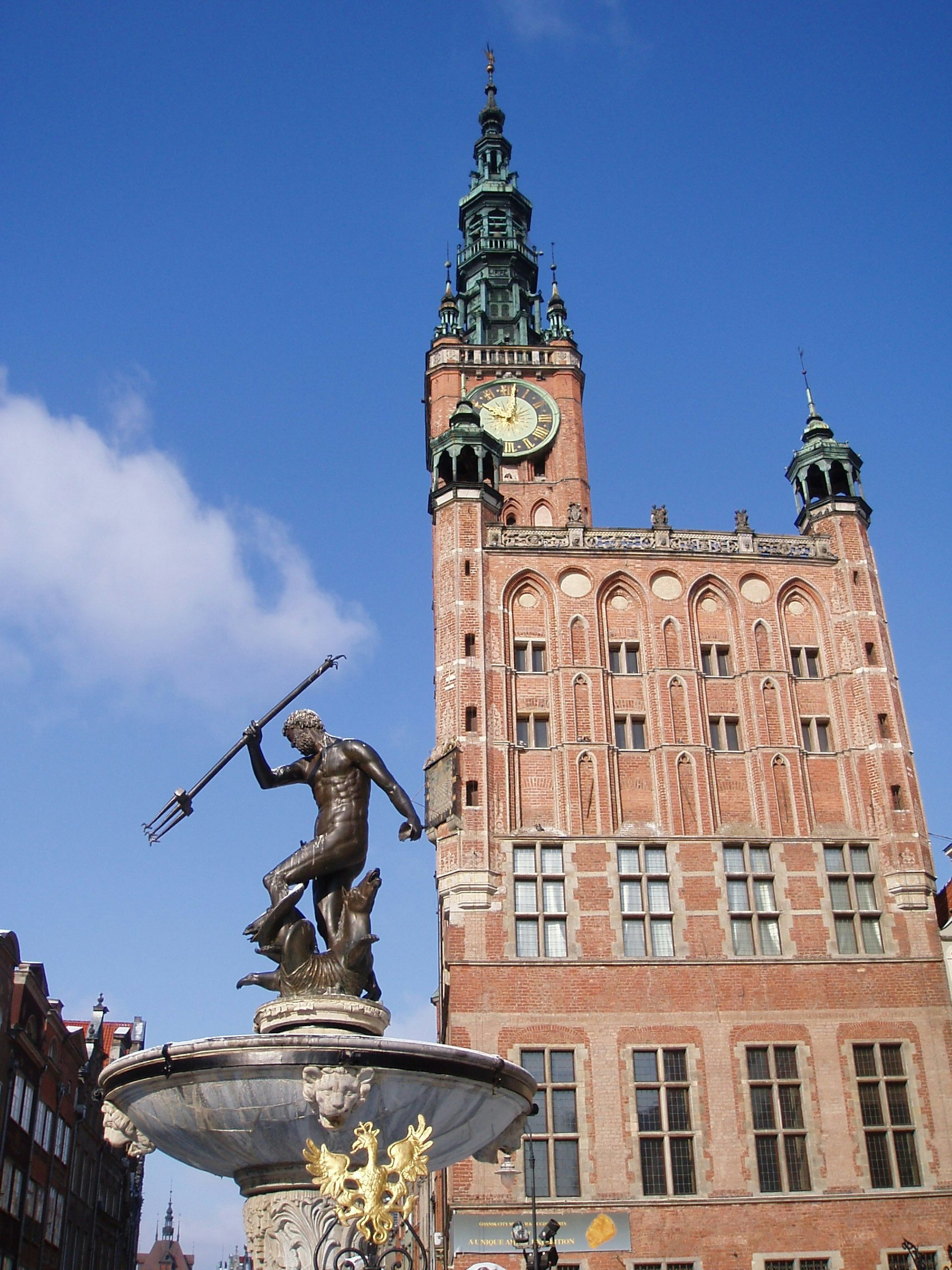
The longest market
Otherwise head onward, as ul Długa opens up into Długi Targ (Long Market), the hub of the old city. This elongated open space is thronged with visitors and lined by beautiful facades, such as that of the 1618 Golden House.
The Town Hall is another landmark, a soaring brick structure topped with a clock tower. It’s home to the Gdańsk History Museum, whose highlight is the beautiful Red Room. Dismantled and hidden in World War II, this richly decorative 16th-century chamber was restored after the conflict.
A focal point of the market is the Neptune Fountain, topped with a statue of the sea god whose trident is said to have once miraculously gushed the gold-flecked local liquor, Goldwasser. Behind it is Artus Court, a former guildhall which has been visited over the centuries by kings and presidents.
The Green Gate brings you to the end of the market and the Royal Route; step through it for your first glimpse of the Motława River, the waterway which links the city’s docks to the sea. Walk north along its banks then turn left through the grand St Mary’s Gate into ulica Mariacka, and prepare to encounter pure charm.
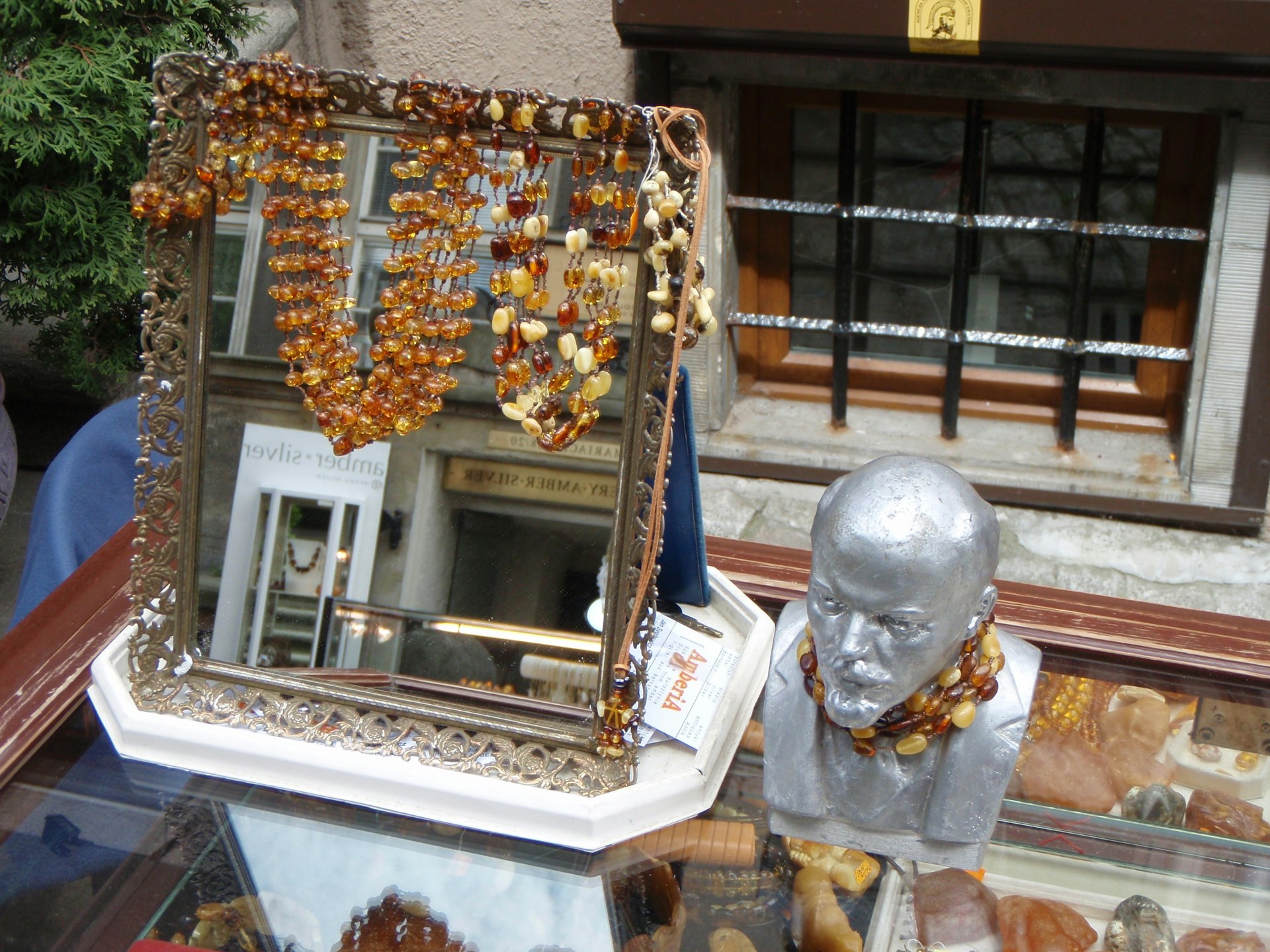
The gems of St Mary
This attractive pedestrian street is lined with cafes and shops with rich ornamental facades – even the drainpipes are decoratively carved with gargoyles for heads. Many shops sell jewellery featuring either gold or amber (or both), providing much to look at even if you aren’t planning to buy.
The street ends at the medieval St Mary’s Church, a structure as imposing as ul Mariacka is dainty. Begun in the 14th century, this is one of the largest brick churches in the world, and an inescapable Gdańsk landmark. Its highlights are its fine astronomical clock, and the views from its tower.
Waterside treats
From the church, walk north to ul Szeroka then head east back to the river. On the way you’ll pass Restauracja Pod Łososiem (Restaurant under the Salmon). This elegant eatery has been here since 1598 and, as the name suggests, is famous for its seafood. Its dishes are great value for their quality, and the restaurant is also famous for its Goldwasser, which was produced in its cellars for centuries.
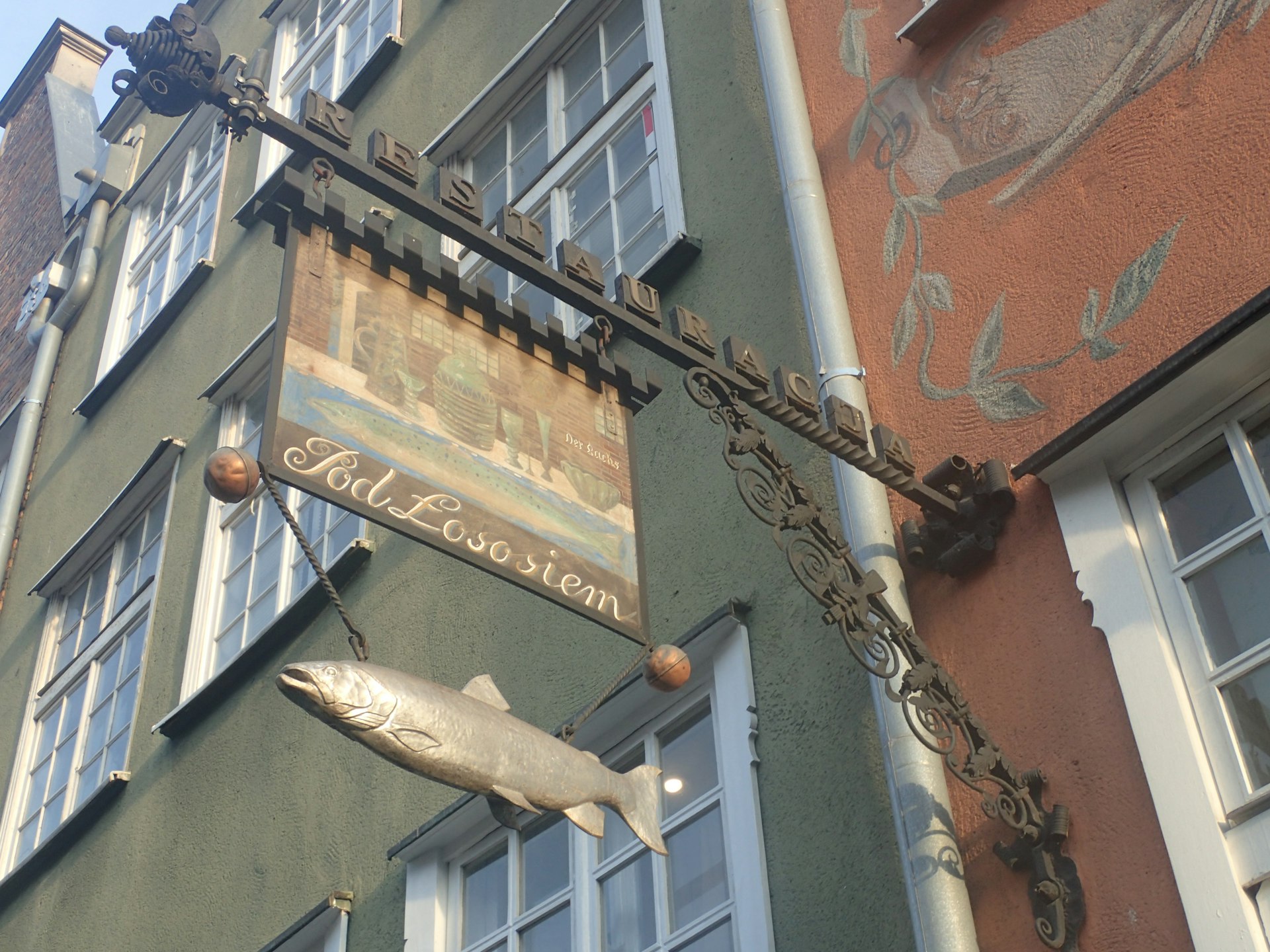
Stop and eat, or walk on – there’s plenty more to see. At water’s edge is the Gdańsk Crane, a massive medieval structure which lifted cargo between ships and shore. It’s part of the nearby National Maritime Museum, packed with exhibits on the city’s seafaring past. A short ferry ride takes you across the river to more of its exhibits on Ołowianka, an island which also houses the Baltic Philharmonic Hall.
Take the island’s northern walkbridge back to the city, then follow the riverbank north to the Museum of the Second World War (muzeum1939.pl). Gdańsk is where this epochal conflict began, and this ultramodern facility (opened in 2017) tells the story of the war’s impact.
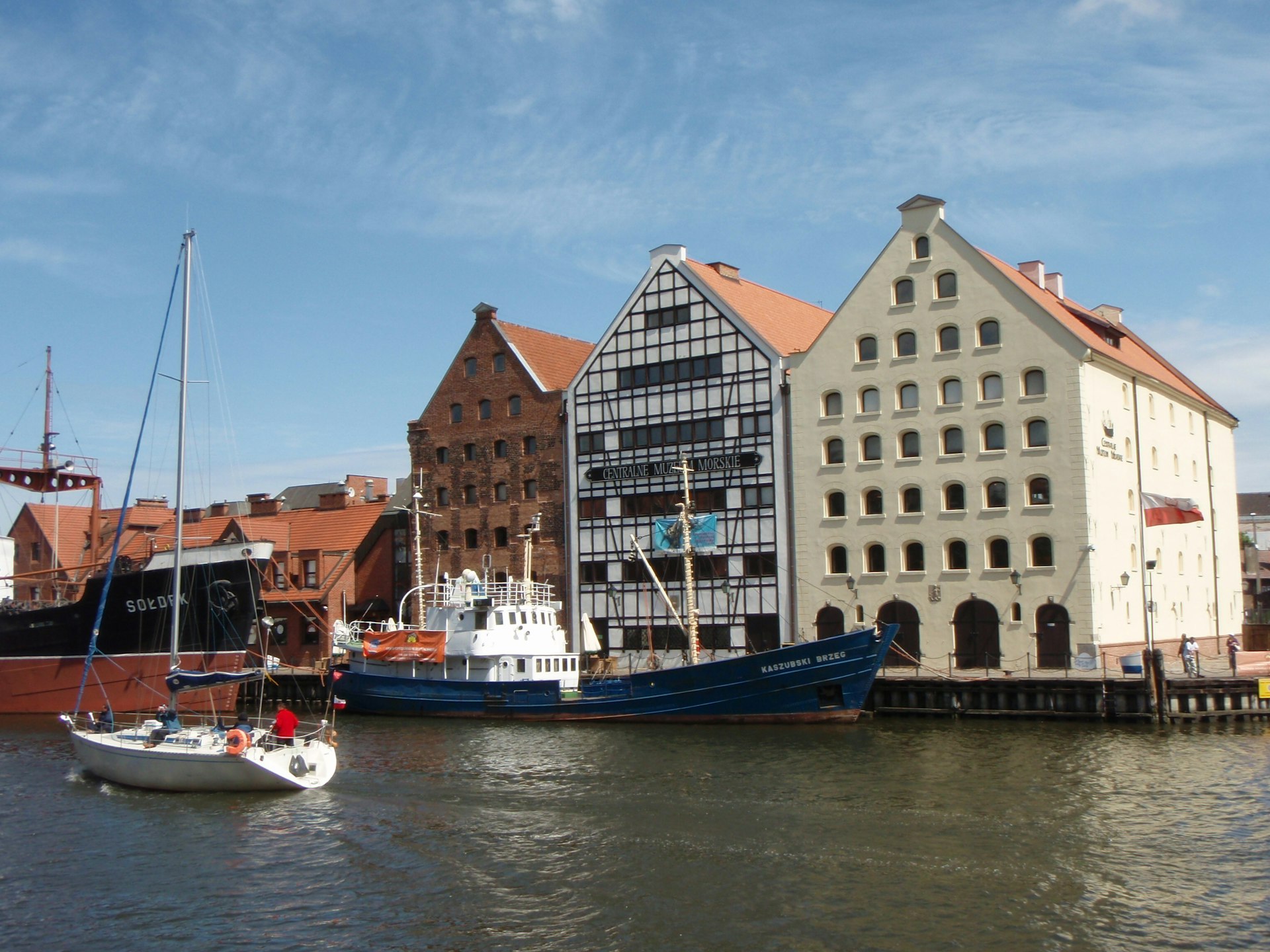
The shipyard that shook the world
More recent history lies a 15-minute stroll northwest of the museum, at the site of the Gdańsk Shipyard, whose cranes can still be seen on the skyline. This industrial site was where the trade union Solidarity was formed in 1980, sparking the decade-long resistance that would bring down Poland’s communist regime.
The stirring story of that period is told at the European Solidarity Centre, opened in 2014. A rust-coloured building whose exterior is reminiscent of a ship’s hull, it houses a permanent exhibition which traces the tensions and turning points of that struggle.
Once you’ve reflected on that aspect of the city’s industrial heritage, walk a short distance north to Hall B90 (b90.pl). On the water’s edge, this former shipyard structure is now the home for alternative music and art. It seems fitting that this walk ends on an upbeat note. Gdańsk has seen much triumph and tragedy in its long, contested history, but its people and culture have endured.
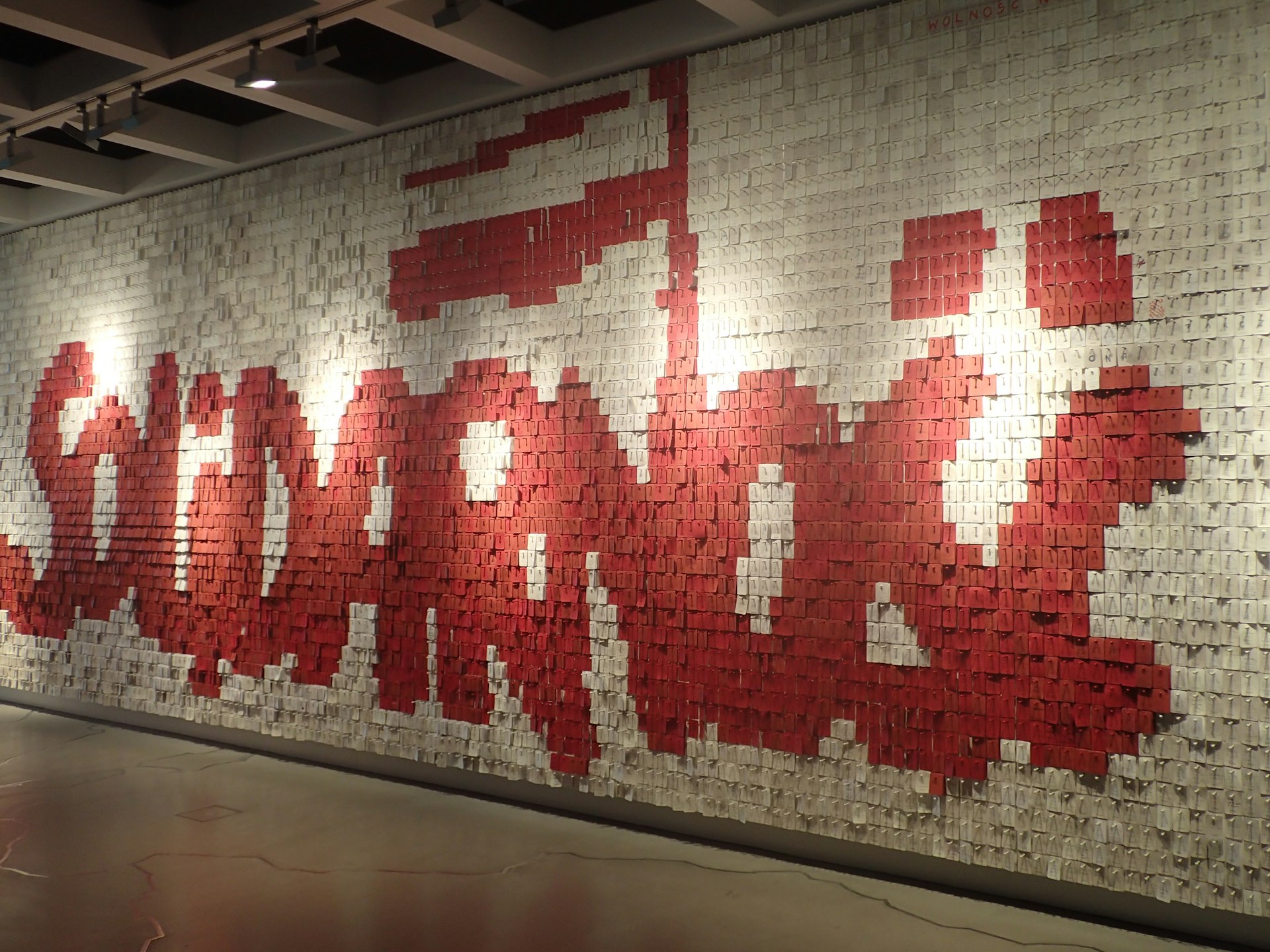
Other highlights
There are plenty of other sights worth visiting beyond the limits of this walk. Cruises can be taken from the Main Town to Westerplatte, where you can visit a WWII memorial and the nearby historic Wisłoujście Fortress. To the west of the city centre, Gradowa Mountain can be climbed for sweeping views.
To immerse yourself in nature outside the centre, try cycling the trails of the Tri-City Landscape Park, or lazing on the sandy beaches of Sobieszewska Island. Or head north to leafy Oliwa, which has a cluster of attractions including Oliwa Cathedral and the Modern Art Gallery.
If the mood takes you, have a meal near Długi Targ then stroll past its beautiful buildings by moonlight. End with a drink somewhere cool such as Józef K, a café-bar named after a character created by author Franz Kafka. With its elegant old exterior, and its cool industrial-themed interior, it’s the perfect distillation of Gdańsk: old jostling with new, to create somewhere intriguing.
